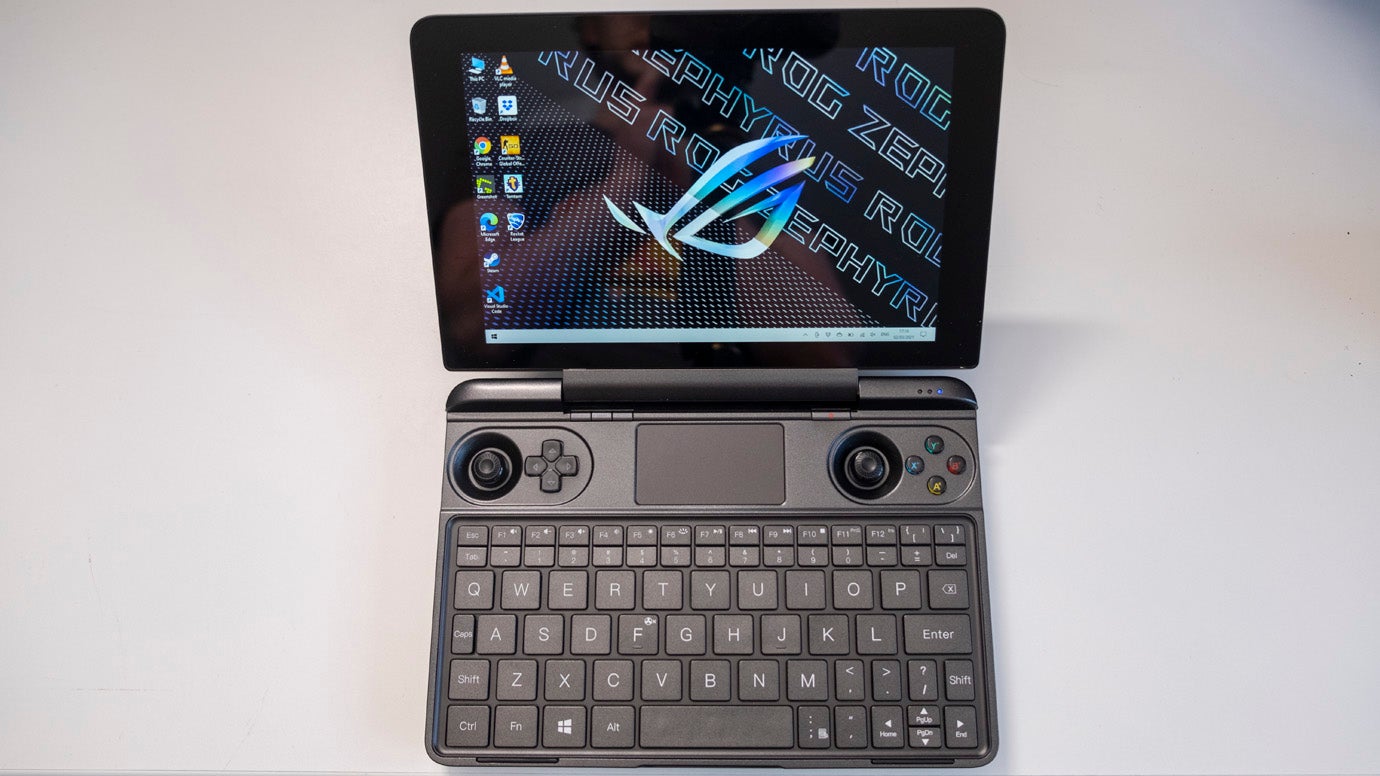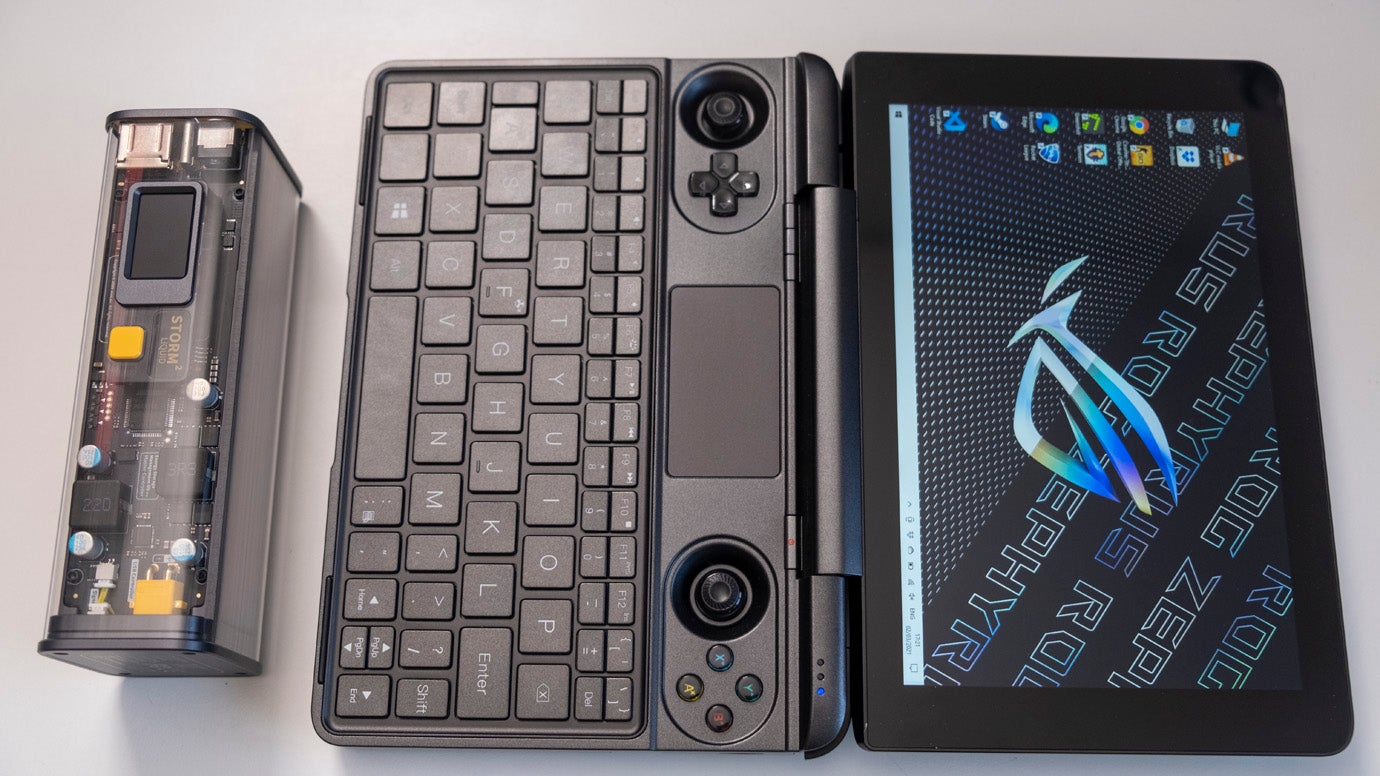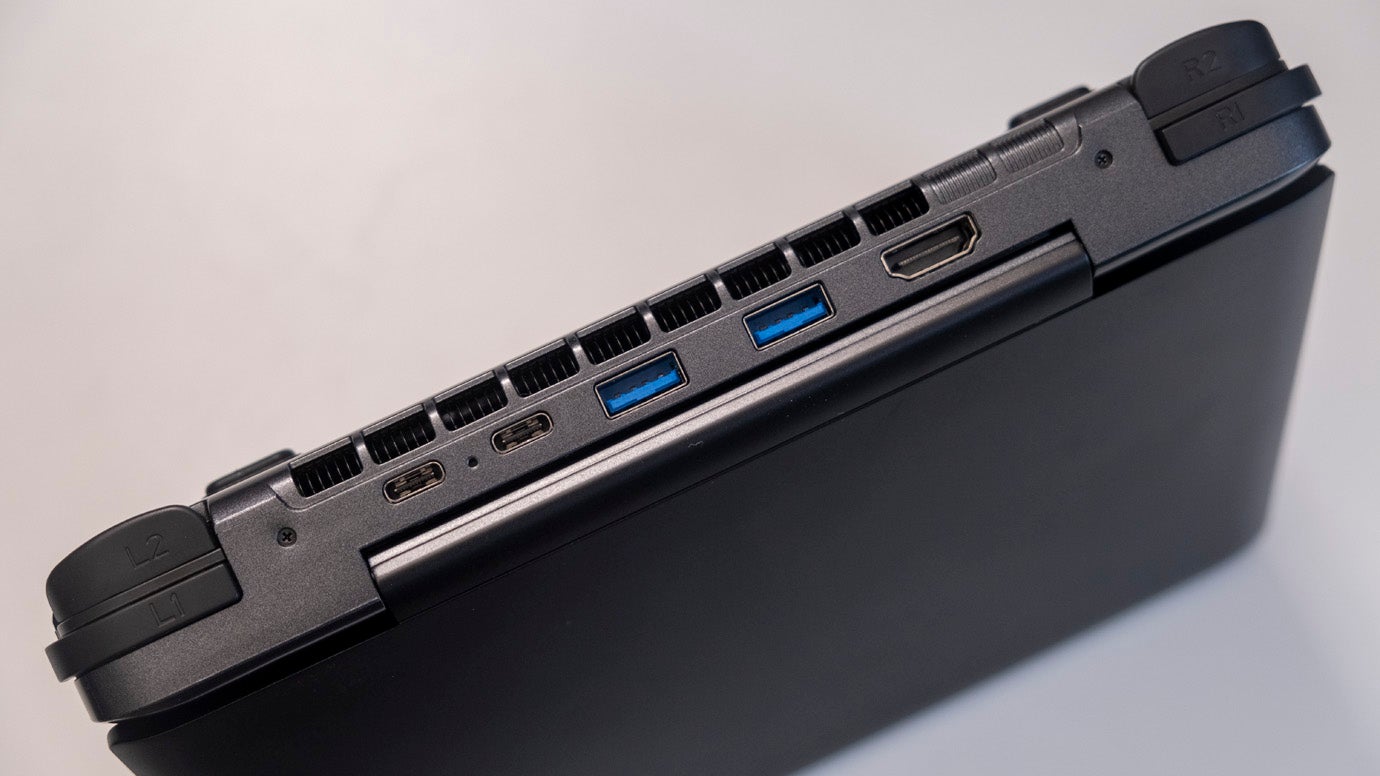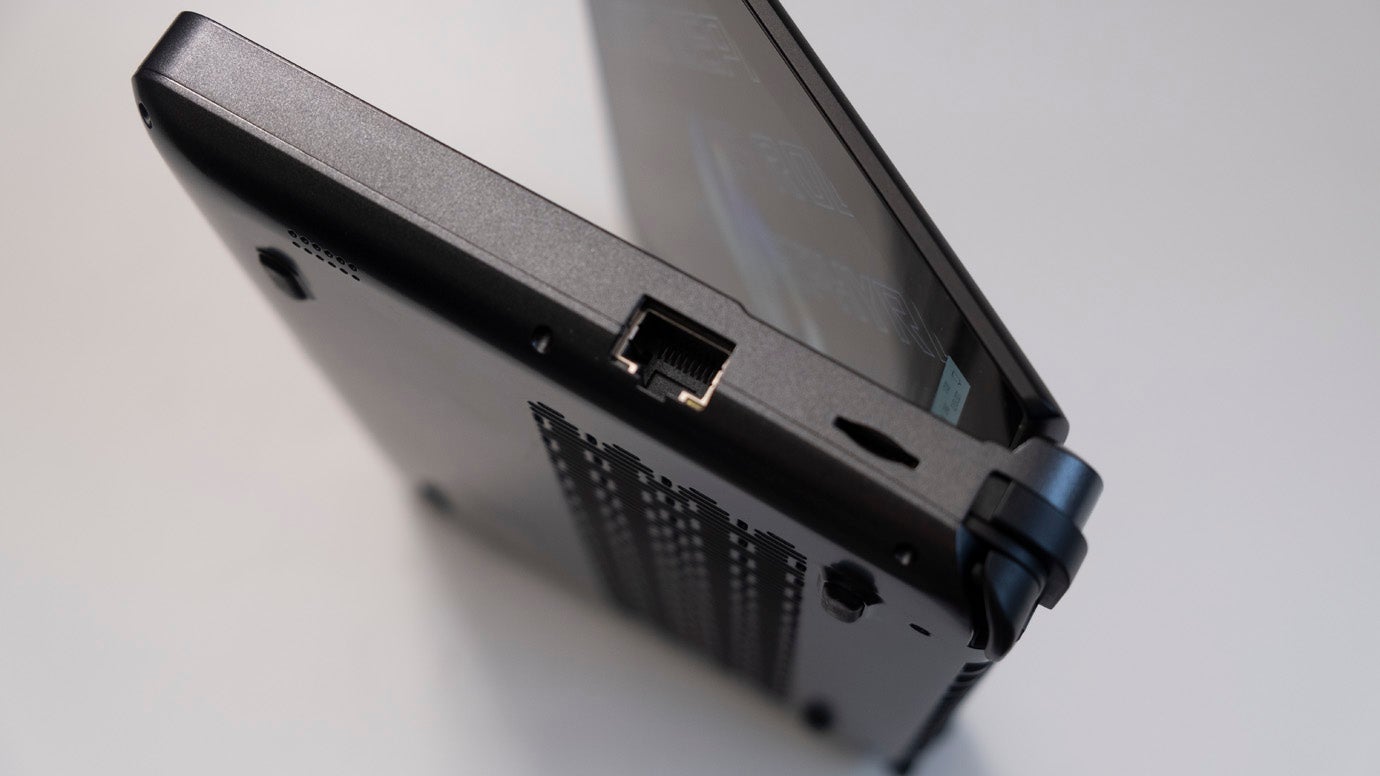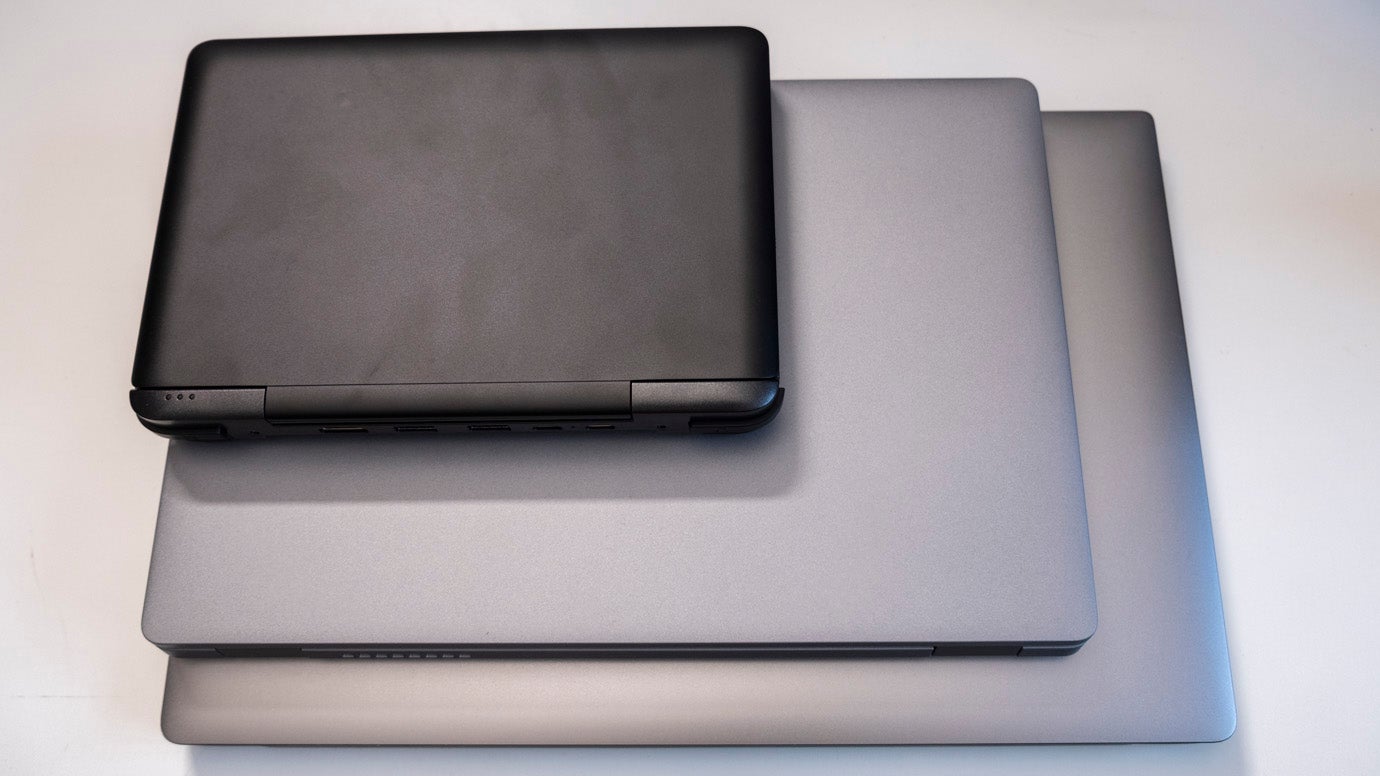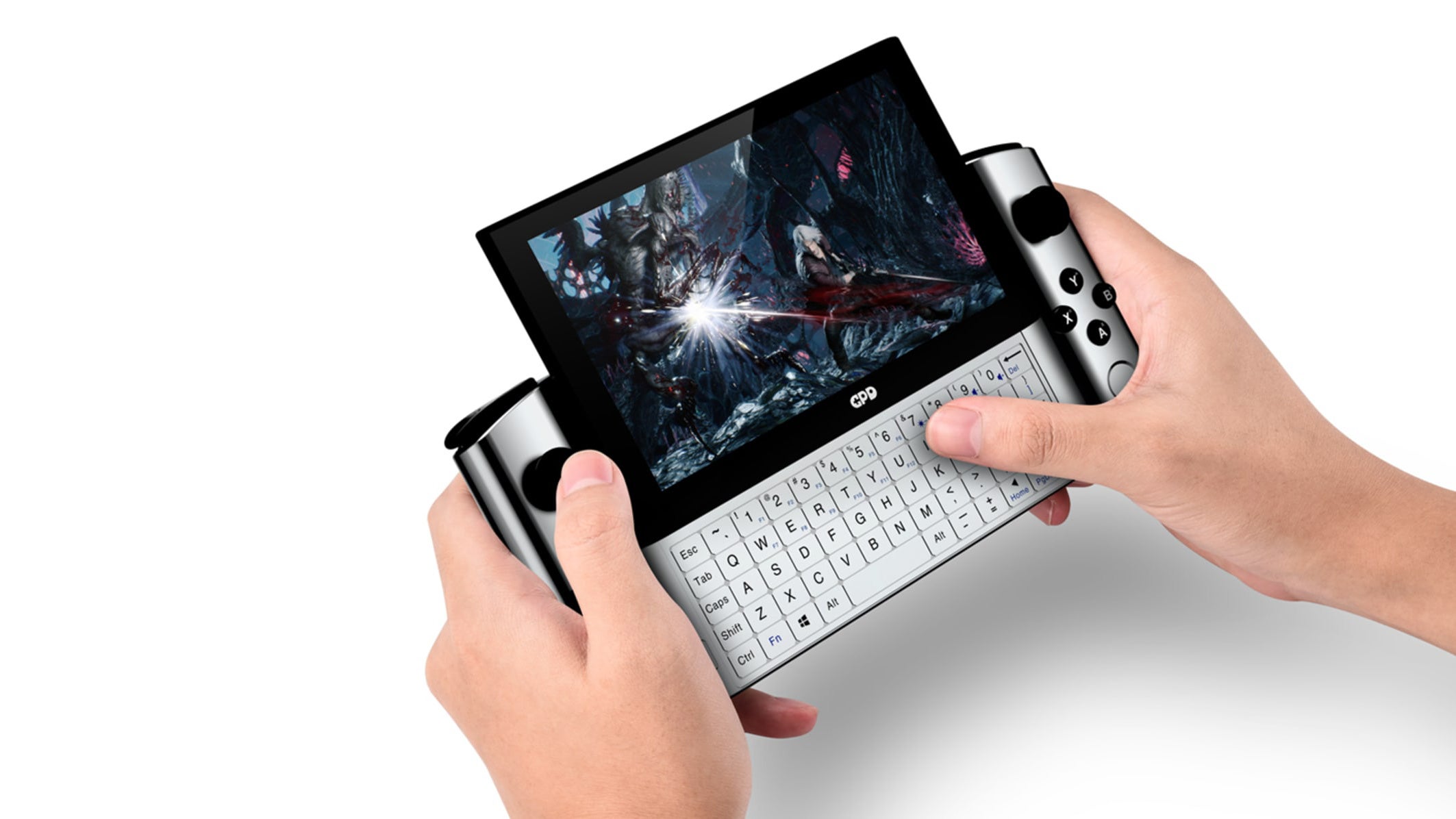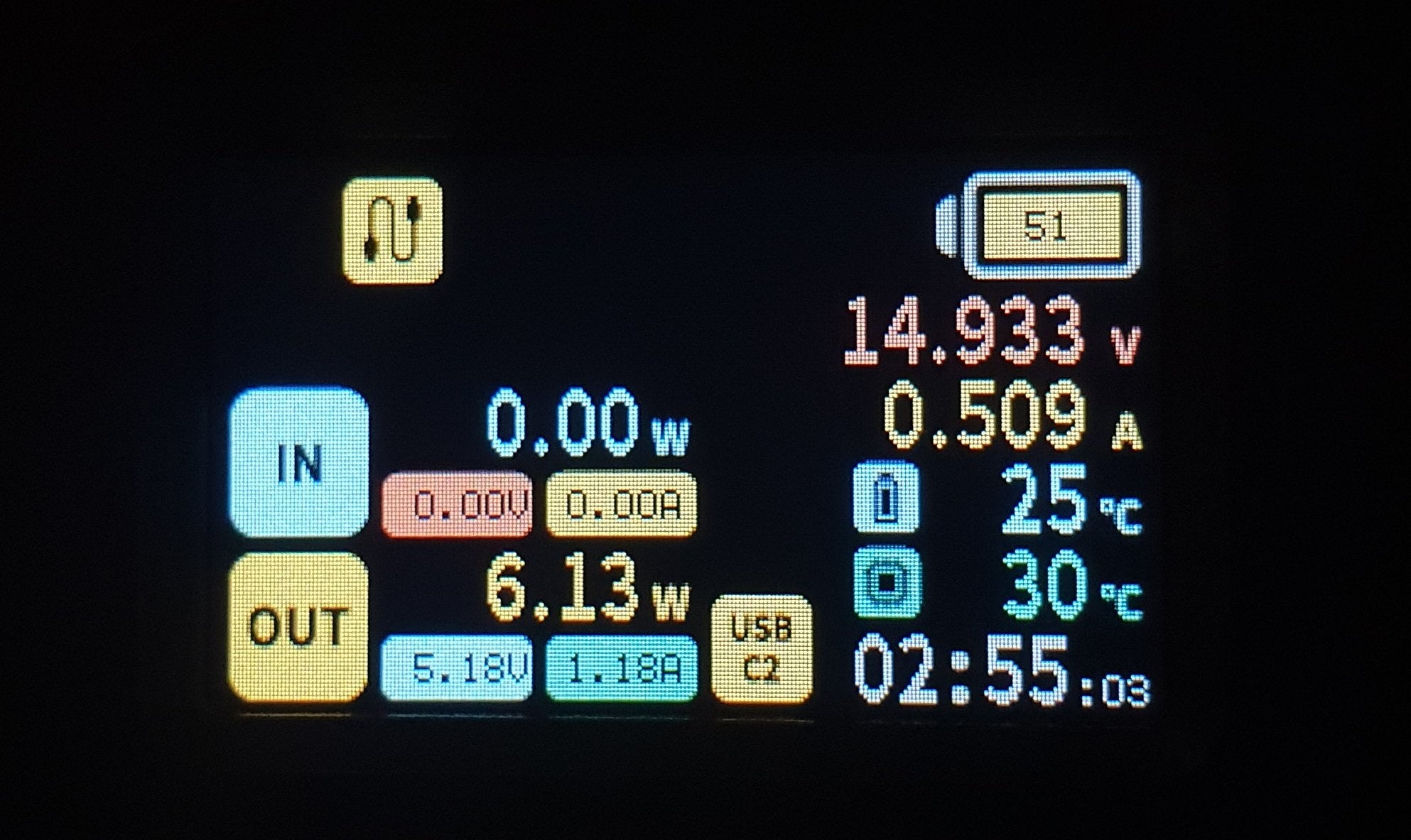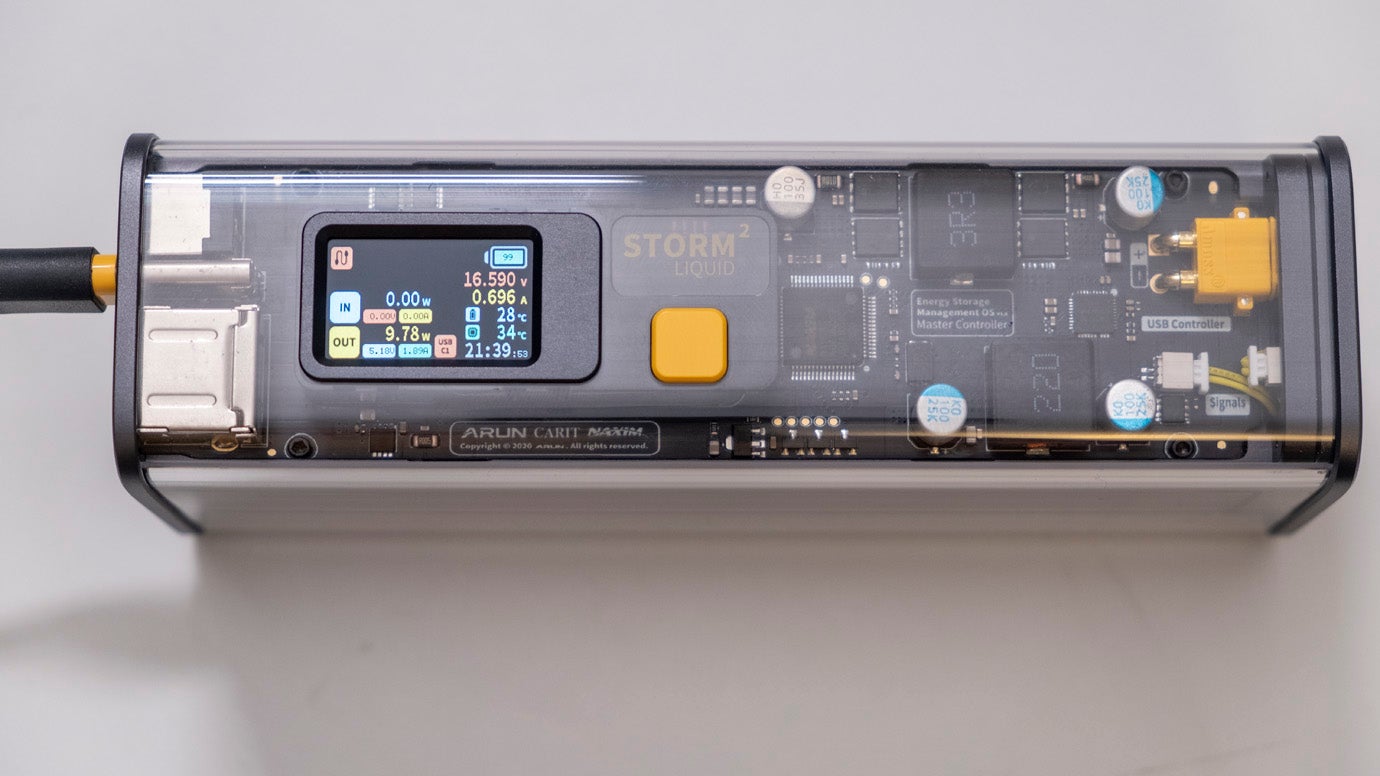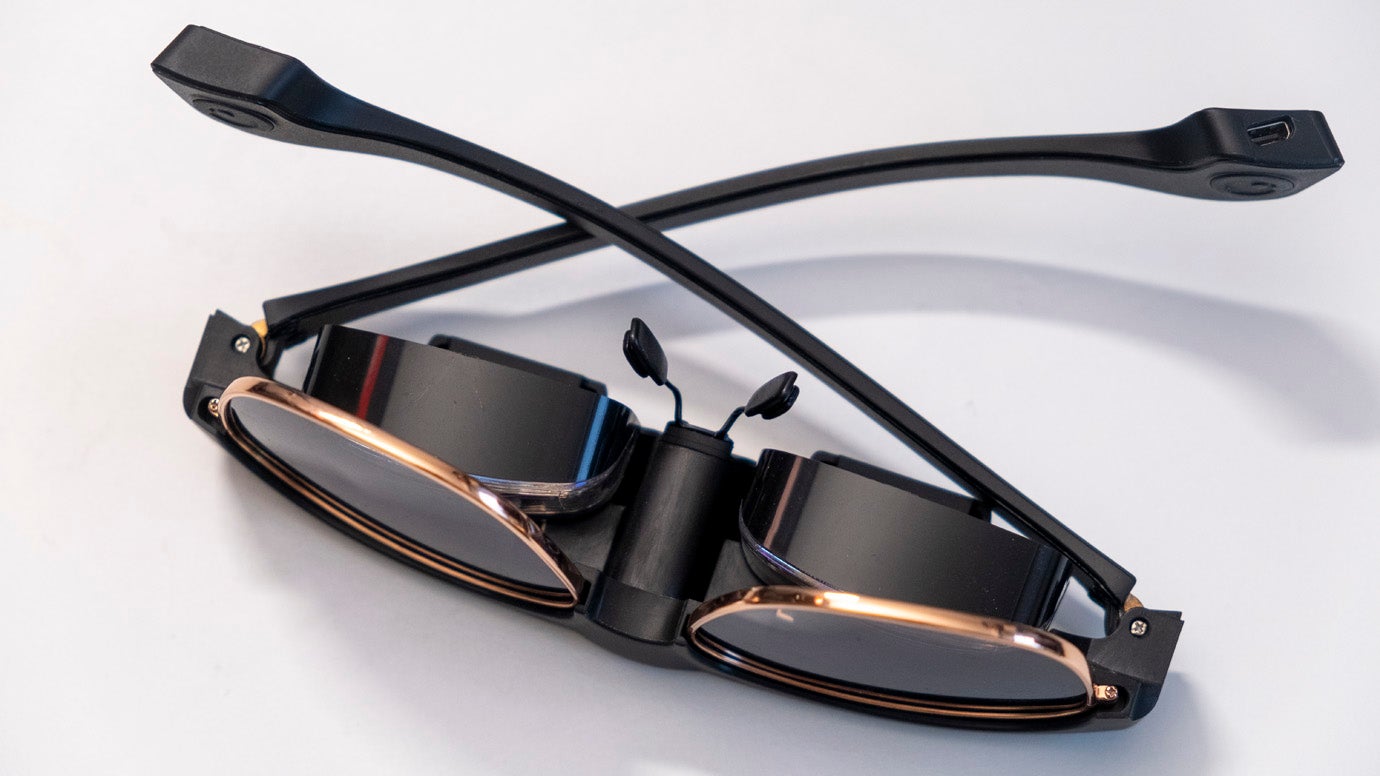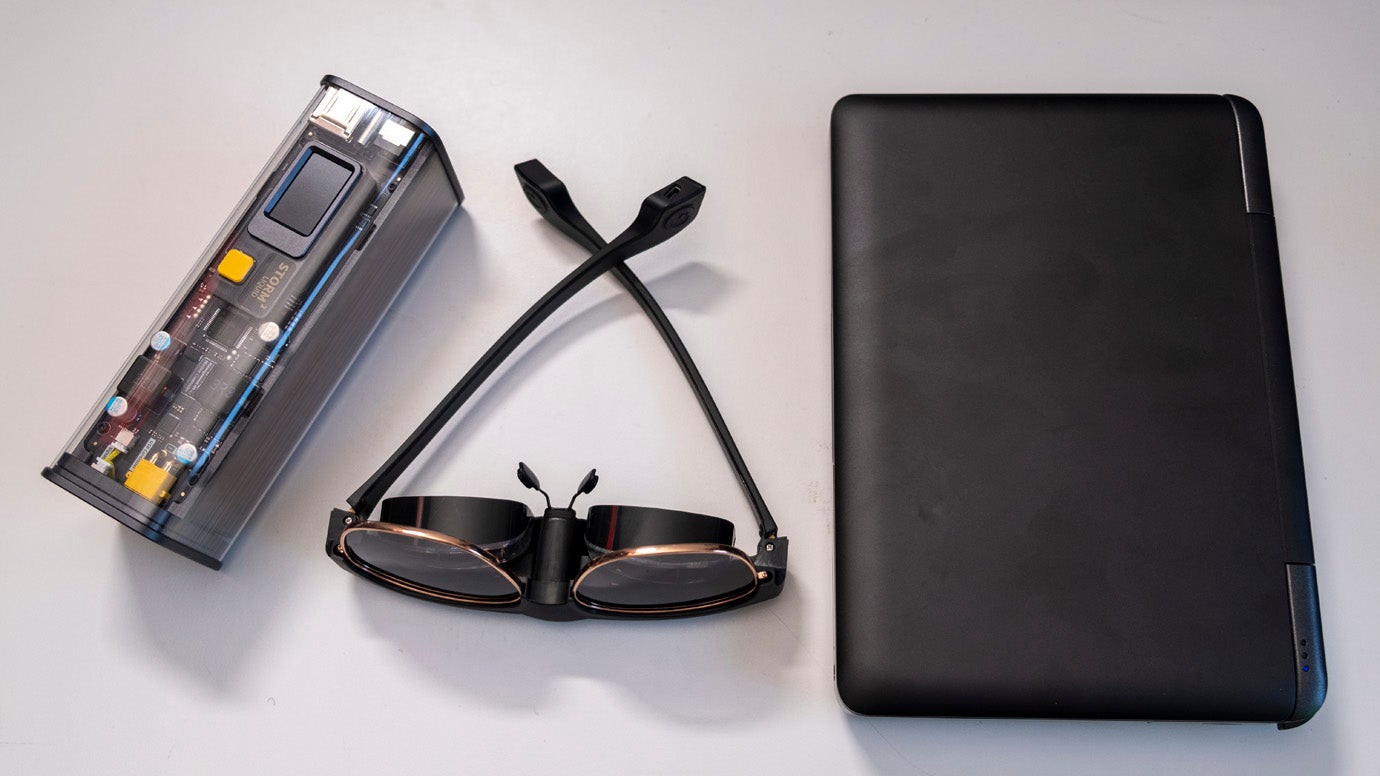2020 was a year of dashed plans and weird events, but it was also one that was full of cool, novel and genuinely exciting pieces of technology. We’ve covered some of it here on Eurogamer and on the Digital Foundry YouTube channel, but there were also a fair few items that fell through the cracks, especially as the Digital Foundry Deals project took off and next-gen consoles arrived. This week, we’re redressing some of these omissions with three of the coolest tech projects I tested in 2020 - from a miniaturised gaming laptop to a retro-future power bank and one of my biggest tech disappointments of the year. Let’s get started. So - games then. The specs and design here work surprisingly well for just that, as the Win Max is just small and light enough (21x15x3cm, 800g) to be held for an hour or so without discomfort. Of course, you can also use a wired or wireless controller, or even plug in a keyboard and mouse, which is what I opted to use for most of my testing time. In-game performance from the up-to-30W CPU and integrated Iris Plus 940 graphics is reasonable; you can play Rocket League at native resolution (720p) at around 60fps which is great; I also tested and enjoyed Pokémon-alike Temtem (~40fps at ultra settings) and competitive shooter Counter-Strike (~60fps at lowest settings), although the latter required a keyboard and mouse plugging in to be at all playable. The Win Max has some zip moving around Windows and installing games too, courtesy of its 16GB of RAM and 512GB NVMe SSD, so even Windows updates were a relatively painless experience - something that often isn’t true on compact game-playing machines. Of course, where this handheld-cum-laptop really shines is the same place that Android set top boxes and low-powered laptops do: cloud streaming and emulation. The built-in gamepad is more than good enough to keep up, and you also have uncommonly good I/O at your disposal, including enough USB ports (two Type-C and two Type A) for a full split-screen race in Mario Kart 64 without even needing to consider a Bluetooth connection. The small number of 2D games, like Hades and FTL, also unsurprisingly play super well here. Of course, there are issues too. The Win Max is loud when its fans spin up; even idling on the Windows desktop it’s loud enough that I ended up using headphones to avoid the whoosh of tiny, high-speed fans. (There is a quiet mode that minimises battery noise, at the expense of performance, but it’s never properly silent like you’d expect a full-size laptop to be.) It’s also not got the best battery life in the world, coming in at around a couple of hours when playing a 3D game, although the small 57Wh battery does recharge pretty quickly over USB-C. The keyboard… well, the best thing I can really say about it is that it’s surprisingly usable. The tiny F-key and number key rows are pretty diabolical, and the half-height up and down arrow keys in the bottom right aren’t convicing either, but the rest of the keys work well enough that you can type out on an article on it as long as you’re careful. The placement of the touchpad above the keyboard also isn’t ideal, although the touch screen and USB or Bluetooth expansion give you plenty of alternative mouse-like inputs. So is the Win Max actually worth the £680 asking price? I honestly went back and forth on this for a while, but honestly I think it’s actually worth buying - at least for a certain type of person. After all, it’s true that you can build or buy a cheaper machine that will run games better, but there’s not really anything in the market that delivers this level of power and portability. This is literally a laptop that you could fit in your (JNCO jeans) back pocket, then pull out to play Tactics Ogre or work on your book report whenever you have some downtime. With Thunderbolt and tons of USB, it could also be the heart of a full desktop setup. And for anyone that loves collecting unusual tech or clever engineering, the Win Max certainly gets full marks. Of course, GPD haven’t been resting on the laurels - there’s already a new project in the works, the GPD Win3. The idea here is to deliver ’the first handheld AAA games console’, by changing from a laptop-like design to a pure handheld design more unequivocally for gaming - complete with a slider keyboard and a Switch-style USB-C charging dock. You could never accuse GPD of being boring! If you’re interested, the Win3’s crowd-funding campaign is coming to a close in the next few days, so do take a look. The screen is undoubtedly the star of the show, and it’s useful too, as you get beautiful live updates on precisely what your power bank is doing - how many watts, volts and amps it’s delivering and out of what ports, its battery level, its temperature and even the time. The look is very reminiscent of the LCARS operating system that ran on the Enterprise in Star Trek: The Next Generation, all pastel colours and rounded rectangle on a black background. There’s also a single large button next to the screen that lets you access the remaining sections of the operating system, with a long press to activate and a single press to move forward. It works well, and gives you access to more info, like the charge available on each of the four batteries inside, how much power you want the DC port to output (!) and whether you want your temperatures in Celsius or Fahrenheit. Presumably this OS could be upgraded down the line - it’s marked as V1.0! - and it’s fascinating to think about what other functions could be squeezed on. As well as being just a really cool thing for nerds like me to own, the Storm 2 Liquid has proven quite practical too. The 99.36Wh battery is the biggest allowed on an airplane, and corresponds to 26700mAh, so it can recharge smaller devices multiple times and bigger ones like laptops almost completely. There are four ports in total - two USB-C, one USB-A and one DC - so you’ll have plenty of ways to charge and keep charged, with the USB-C port capable of delivering up to around 100W - enough for all but high-powered gaming laptops. The casing of the device feels sturdy enough, although I’d probably baby this portable charger a little more on account of its (recessed) screen and clear acrylic shell. If you’re interested in the Storm 2, you can find out more at the Kickstarter here. I have no knowledge of the company behind the device, or their ability to build the Storm 2 to scale, but I can attest that the hardware here looks and feels extraordinary. First of all, the name Godview 5K does kind of suggest that you’re going to be getting a 5K image at some point, and that’s backed up by the company’s marketing. In my testing though, the headset topped out at just 1080p in Windows, and a similar resolution when I connected it to my smartphone. The included USB-C cable never worked, no matter what I plugged it into, so I switched to a mini HDMI cable on the advice of the manufacturers. That did work, but only if I sat perfectly still. If I moved, the left part of the display collapsed into coloured shapes or just turned off entirely. It’s clear that the test unit I was sent wasn’t working as promised, but I got the sense that there were more deep-lying issues here too. Most worryingly, the headset got incredibly warm after just a few minutes of use, to the point that my forehead started to become become quite red. I managed about one episode of Linus Tech Tips (at 2x speed) before I became genuinely concerned that the glasses were going to burn me, and after that I pulled the plug. Of course, apart from the mild danger and substandard optics, the glasses did have some things going for them. They were, as advertised, relatively light and easy to wear, but they also needed to be plugged in to operate, making them somewhat more difficult to walk around with - after all, I kind of got out of the habit of wearing cargo trousers all the time after high school. Going downstairs to the living room proved enough of a disaster for me to quickly abandon hope of going outside with them. That’s not even considering how weird and dorky these look, and coming from a weird dork that probably says a lot. So the GodView 5K - potentially very cool, but at least the unit I got really cast doubt on the whole operation. I truly hope, for the sake of hundreds of Kickstarter backers, that my unit was an anomaly and that the final retail versions behave much better. So that’s it for now! We’ll be back next time to share some more weird tech as we test it, including a Ryzen 4000 mini PC, a 60 per cent size keyboard that claims to have the most advanced RGB on the planet and a selection of planar magnetic gaming headphones for the PS5 and Xbox Series X. Until then, keep your stick on the ice!
